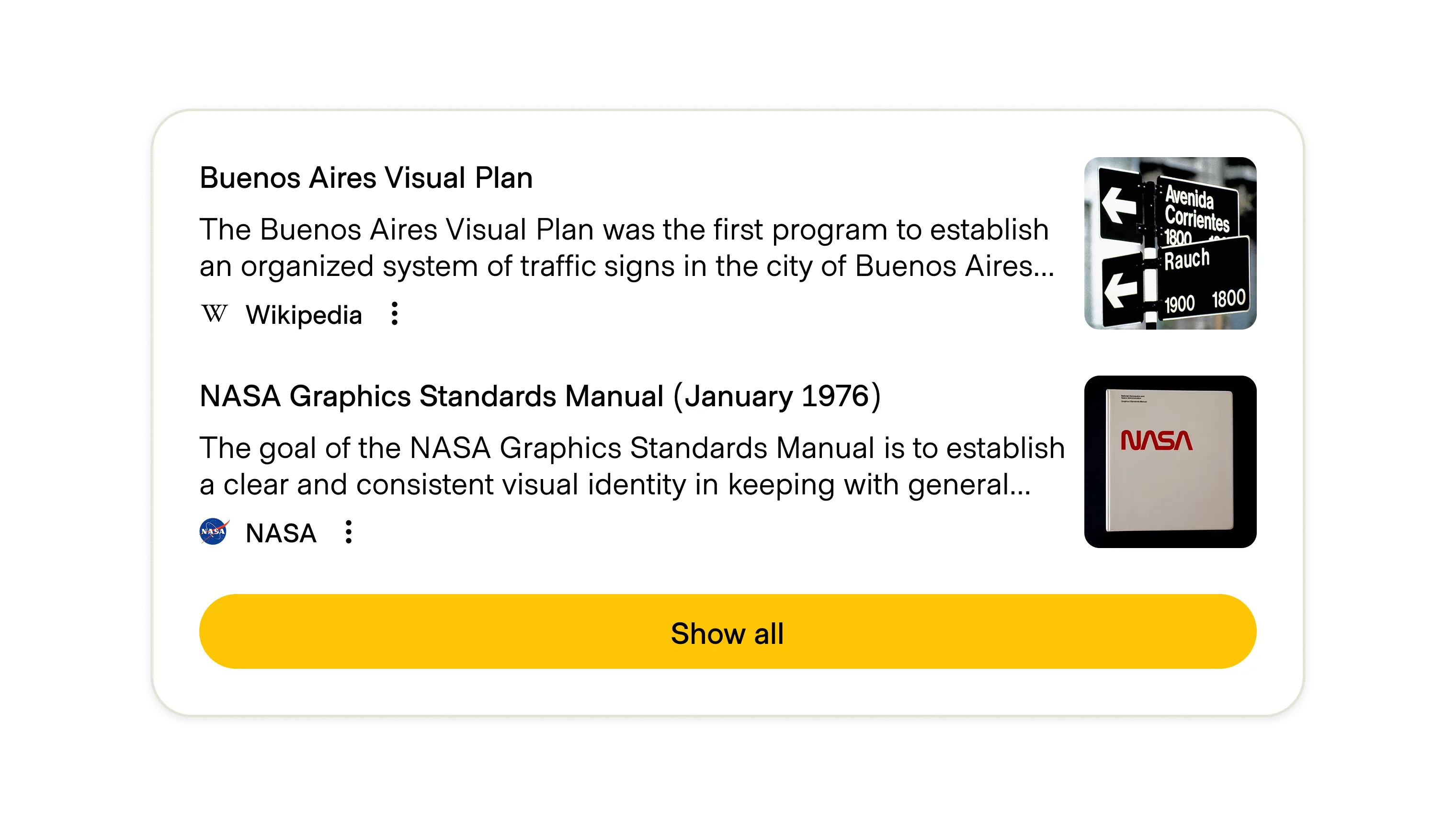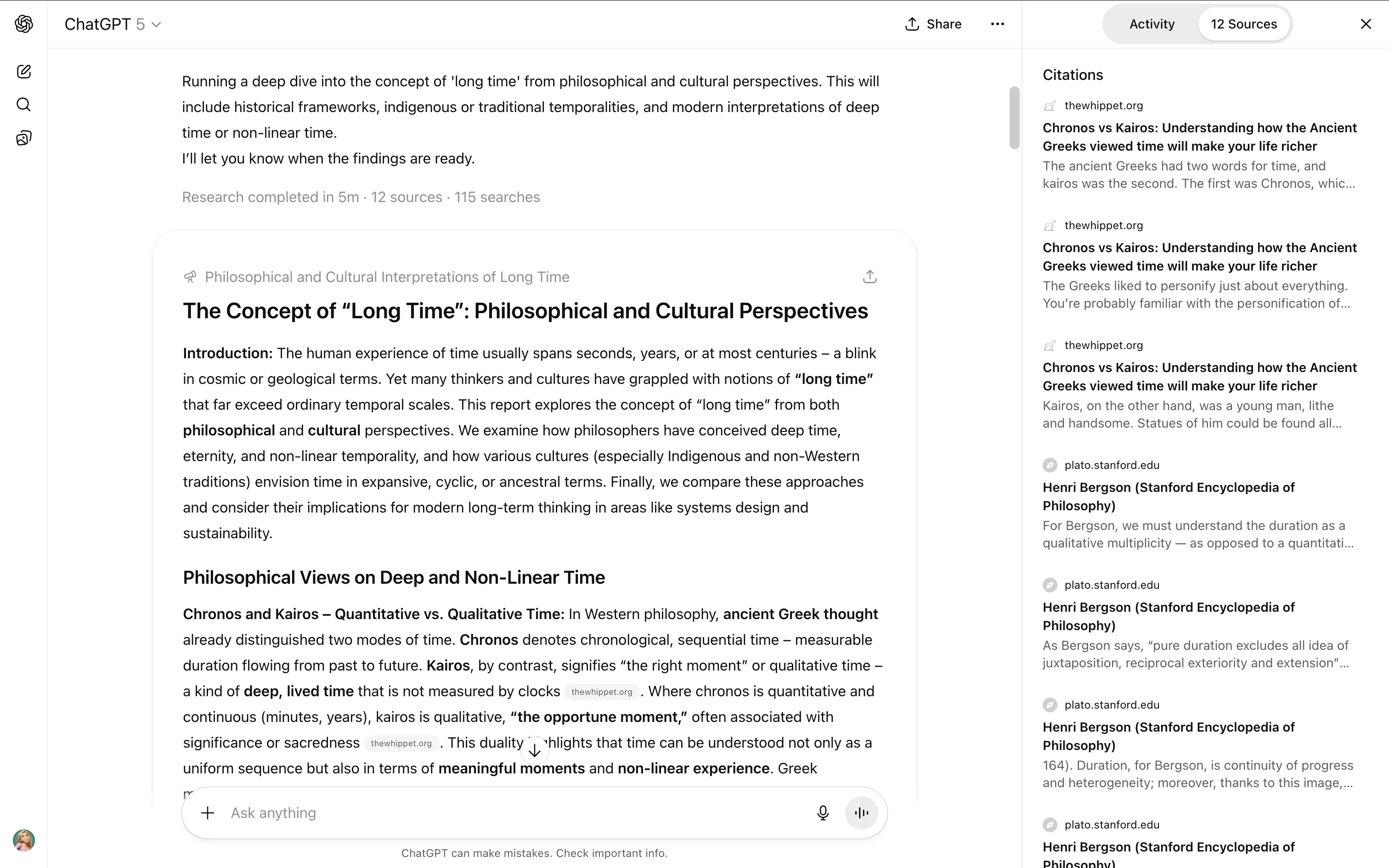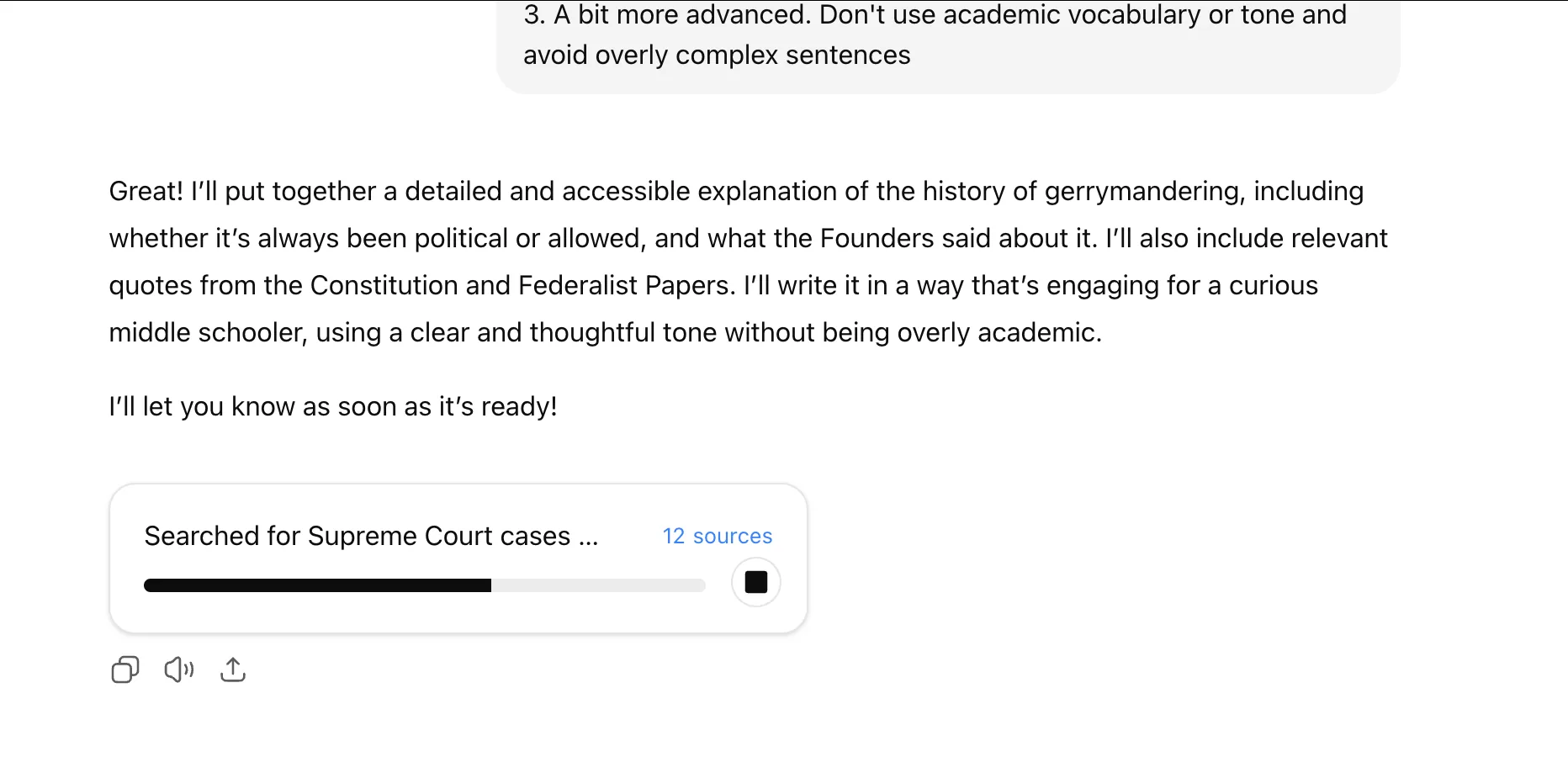

References are the external materials an AI system retrieves and uses to shape its output. They act as a bridge between the model’s static training data and the user’s live context, grounding responses in information that is visible and verifiable. This pattern heavily relies on Retrieval-augmented generation (RAG) which combines foundational knowledge with external data instead of relying only on a model’s frozen training set and context window.
Pairing truncated or synthesized summaries with the source references helps users identify where information came from, decide whether to trust it, and refine the scope of what the AI is considering. Without visible references, the experience becomes a black box that can’t be validated or corrected. With references, users gain leverage: they can connect private sources, filter by type or recency, and click through to confirm or expand results.
The actual reference pattern is codified and simple: a link with some meta information about the source is located relative to the generated content or conversation.
When designing References, consider how much metadata needs to be shown up front to support your use case and the user's intent, whether the reference needs to be visible, and whether interactive disclosure such as on hover or tap is appropriate in the context.

